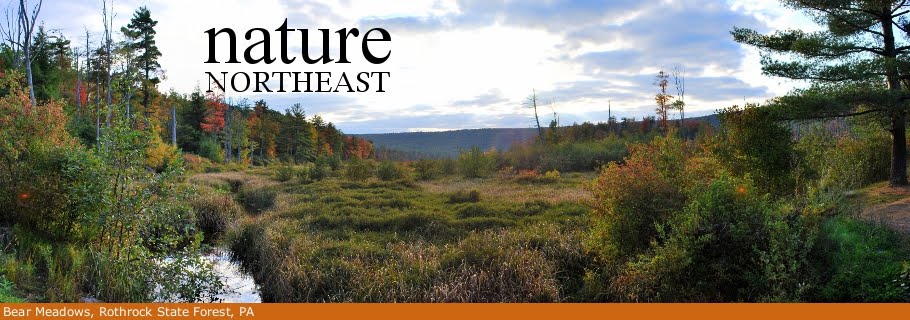If you see flashes of purple as you cruise down Route 495, chances are good that you are driving by patches of New England aster (Symphyotrichum novae-angliae). It may be among the last plant species to bloom in autumn, but it somehow manages to produce a memorable show while other plants are going dormant.
 |
| Symphyotrichum novae-angliae |
New England aster occurs throughout much of the Northeast and can be found growing in old fields, roadsides, and disturbed areas. The species is also considered a facultative wetland plant, which explains why it is frequently encountered in the wet soils of drainage ditches and retention basins.
This species is easy to propagate from seed, and with age, the plant will form a clump of stems that grow up to 6 feet tall. Flowers are generally produced some time in August through October and consist of yellow disk flowers surrounded by brilliant purple or pink ray flowers.
New England aster is an excellent plant species for the home garden and should be included in every butterfly garden. The masses of purple blossoms are not only visually appealing, but they provide pollen and nectar for a wide variety of pollinators, including bumblebees and migrating Monarch butterflies.
Perhaps most intriguing, the New England aster has also served as a muse for American poets. The following piece was composed by George Lansing' Taylor, a 19th century clergyman:
Born to the purplest purple, deep, intense,
Mocking the gentian's fringe with hue more rare,
New England Aster!-What can be more fair!-
Child of the ripe year's calm, serene suspense,
Star of September's glory! say, O whence,
'Mid golden-rod, and golden sunflower's blaze,
Comes the deep tone of those cyanic rays,
For long-lost violets more than recompense?
Thy paler kindred, robed in azure, white,
And pearl, and lavender, around thee stand,
A lovely sisterhood, that laugh in light,
And clothe with splendor many a mile of land;
But thou, imperial Aster, still art queen
Of all the radiant tribes that deck fair autumn's scene.
Mocking the gentian's fringe with hue more rare,
New England Aster!-What can be more fair!-
Child of the ripe year's calm, serene suspense,
Star of September's glory! say, O whence,
'Mid golden-rod, and golden sunflower's blaze,
Comes the deep tone of those cyanic rays,
For long-lost violets more than recompense?
Thy paler kindred, robed in azure, white,
And pearl, and lavender, around thee stand,
A lovely sisterhood, that laugh in light,
And clothe with splendor many a mile of land;
But thou, imperial Aster, still art queen
Of all the radiant tribes that deck fair autumn's scene.

Very nice Nelson. I think I'm going to use your blog to learn more about plants. Hopefully it will help me to be able to identify more plants.
ReplyDeleteAwesomely informative post! Clergymen can be such blowhards.
ReplyDeleteExcellent mix of science and poetry
ReplyDelete